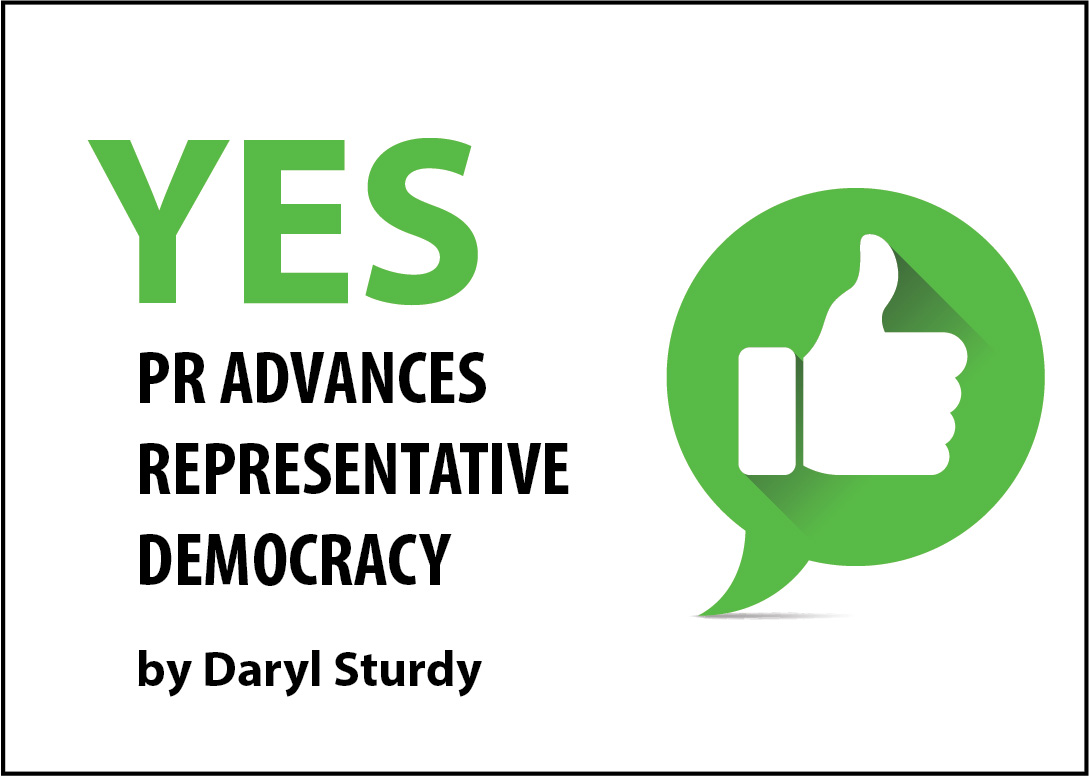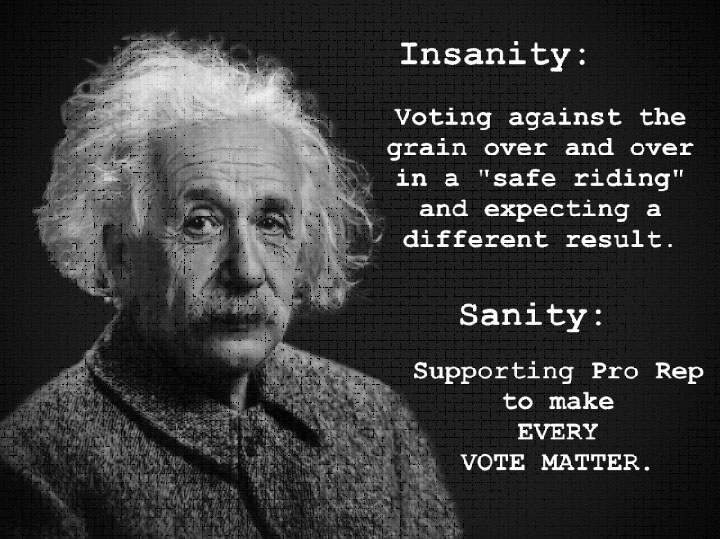
Why should you say YES to Proportional Representation (PR)? Because “The case for PR (Proportional Representation) is fundamentally the same as that for representative democracy. Only if an assembly represents the full diversity of opinion within a nation can its decisions be regarded as the decisions of the nation itself.” (Encyclopedia Britannica)
If you want a government that is in line with your beliefs, you not only need to have your vote counted, you need your vote to count. Under first past the post (FPTP) unless your vote goes to electing a candidate, your vote does not count. Under PR, every vote counts to electing a candidate, either the riding candidate, or a regional candidate.
FPTP distorts the will of the people. 40% of the vote = 100% of the power.
PR expresses the will of the people. 40% of the vote = 40% of the seats.
Which is fairer?
Under FPTP, only around 50% of votes count. In countries with a similar PR system to what’s being proposed for BC, over 90% of votes count towards electing a candidate. Which system is more likely to get you what you want?
FPTP is unfair and undemocratic and unlikely to give you the type of government you want. Some numbers to illustrate this:
| 3% | in 1996, the amount of the popular vote by which the BC Liberals topped the NDP, when the NDP “won” the election. |
| 22% | in 2001, the % of the popular vote received by the NDP |
| 3% | in 2001, the % of seats won by the NDP |
| 40% | in 2017, the % of the popular vote received by the BC Liberals |
| 49% | in 2017, the % of seats won by the BC Liberals |
| 17% | in 2017, the % of the popular vote earned by The Green Party |
| 3% | in 2017, the % of seats won by The Green Party |
The anti-electoral reform people are putting out misleading, cherry picked, irrelevant, and fear inducing “information”, skillfully crafted to persuade you that the sky will fall if you support PR.
As an antidote, view the video of Helen Clark, former PM of New Zealand being interviewed on YouTube.
Helen Clark was a staunch supporter of FPTP, then chose to adopt PR. The video gives her reasons and how well PR has worked. Skip the introduction and go to minute 18.
As well as Helen Clark, 11 commissions across Canada, including the Citizens Assembly, have recommended PR as a fairer more democratic system. The anti-electoral reform group will give you all kinds of misleading reasons not to adopt PR. Who would you trust?
Money back guarantee. After 2 election cycles under PR, there will be another referendum to decide whether to keep PR or go back to FPTP.
In the words of the immortal John Lennon, “All I am saying, is give PR a chance.”


Other Links of Interest in Support of Proportional Representation
www.fairvote.ca
www.leadnow.ca
(Thanks to Jean Oke of the Cariboo/Chilcotin Branch for providing links to additional online resources)
Editor’s Note: The opinions expressed in this article are those of the writer.


